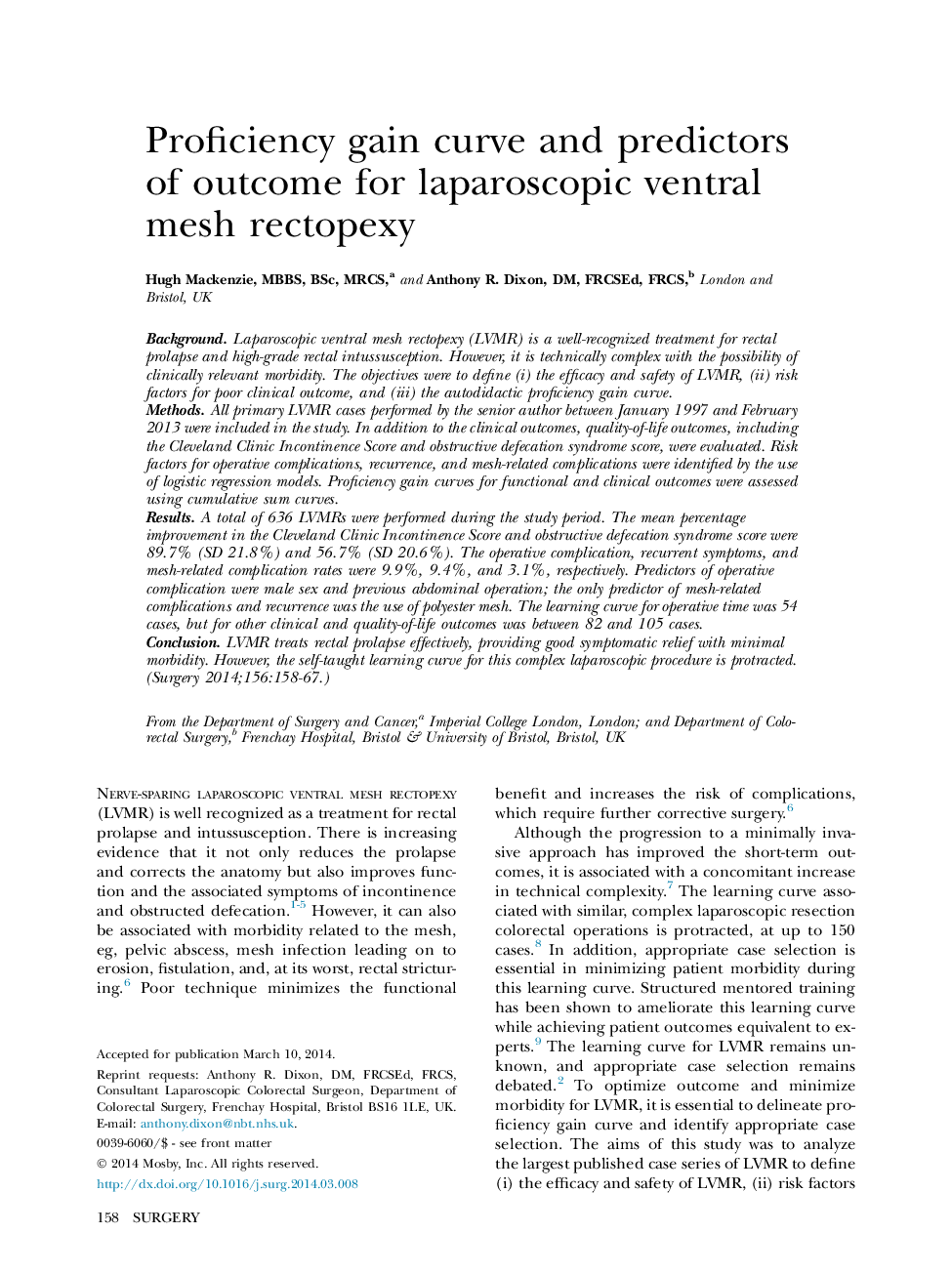| Article ID | Journal | Published Year | Pages | File Type |
|---|---|---|---|---|
| 4307958 | Surgery | 2014 | 10 Pages |
BackgroundLaparoscopic ventral mesh rectopexy (LVMR) is a well-recognized treatment for rectal prolapse and high-grade rectal intussusception. However, it is technically complex with the possibility of clinically relevant morbidity. The objectives were to define (i) the efficacy and safety of LVMR, (ii) risk factors for poor clinical outcome, and (iii) the autodidactic proficiency gain curve.MethodsAll primary LVMR cases performed by the senior author between January 1997 and February 2013 were included in the study. In addition to the clinical outcomes, quality-of-life outcomes, including the Cleveland Clinic Incontinence Score and obstructive defecation syndrome score, were evaluated. Risk factors for operative complications, recurrence, and mesh-related complications were identified by the use of logistic regression models. Proficiency gain curves for functional and clinical outcomes were assessed using cumulative sum curves.ResultsA total of 636 LVMRs were performed during the study period. The mean percentage improvement in the Cleveland Clinic Incontinence Score and obstructive defecation syndrome score were 89.7% (SD 21.8%) and 56.7% (SD 20.6%). The operative complication, recurrent symptoms, and mesh-related complication rates were 9.9%, 9.4%, and 3.1%, respectively. Predictors of operative complication were male sex and previous abdominal operation; the only predictor of mesh-related complications and recurrence was the use of polyester mesh. The learning curve for operative time was 54 cases, but for other clinical and quality-of-life outcomes was between 82 and 105 cases.ConclusionLVMR treats rectal prolapse effectively, providing good symptomatic relief with minimal morbidity. However, the self-taught learning curve for this complex laparoscopic procedure is protracted.
